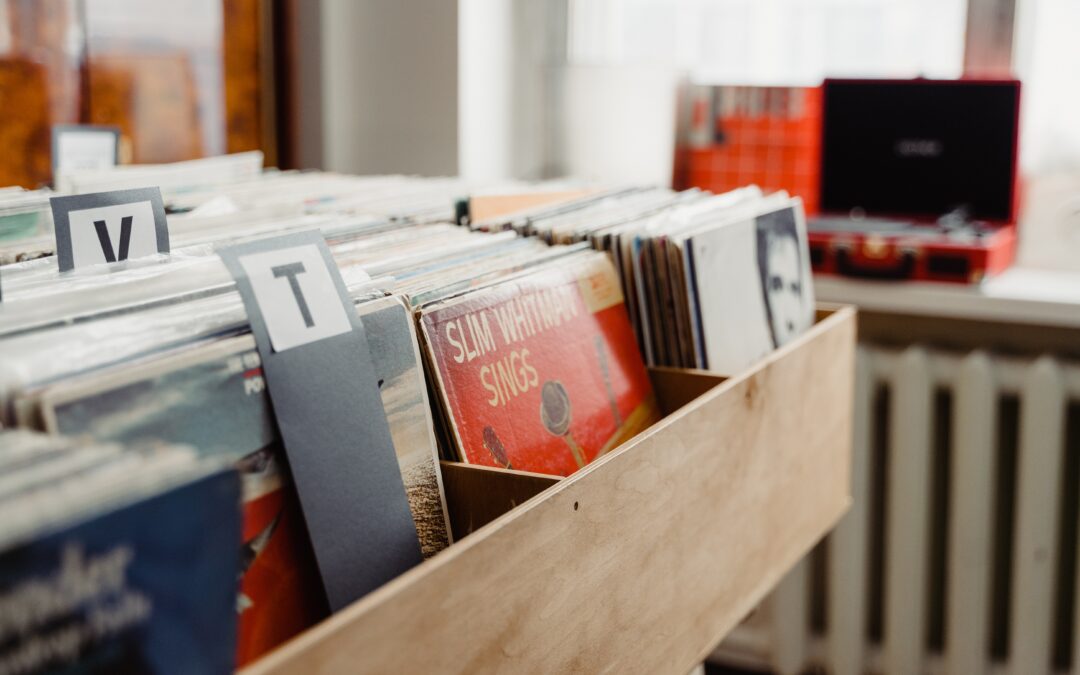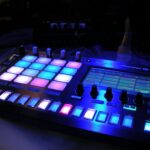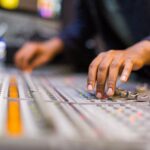Introduction
The world of music production has witnessed a remarkable transformation over the years, thanks to the creative use of sampling and field recordings.
These techniques have become essential tools for artists across various genres, enabling them to craft unique sonic experiences.
In this 3000-word blog post, we’ll explore the art of sampling and field recordings, their historical context, and their profound impact on modern music production.
Sampling and field recordings have a rich history in music production, and their evolution can be traced back to the early days of recording technology.
Before we dive into the technical aspects, it’s crucial to understand the journey these techniques have taken.
Understanding Sampling
Sampling, in the context of music production, refers to the practice of taking a small portion (or sample) of an existing audio recording and incorporating it into a new composition.
This method has been a game-changer in the music industry, allowing artists to repurpose and reinterpret existing sounds.
Sampling is not a new concept; it has been around for decades. However, its popularity exploded in the 1980s with the rise of hip-hop.
Early samplers like the Akai MPC series and the E-MU SP-1200 became iconic instruments in the genre, allowing producers to chop and manipulate samples with unprecedented ease.
Historical Context: From the Early Days to Modern Sampling Techniques
To appreciate the current state of sampling, it’s essential to look back at its historical context. Sampling has roots in musique concrète, an experimental music genre developed in the mid-20th century.
Pioneers like Pierre Schaeffer used tape manipulation to create new compositions from found sounds, setting the stage for sampling as we know it today.
As technology advanced, so did sampling techniques. The advent of digital samplers in the late 1970s and early 1980s made it easier for musicians to capture and manipulate sounds.
Artists like Grandmaster Flash and The Bomb Squad began using these tools to revolutionize hip-hop.
Legal and Ethical Considerations in Sampling
While sampling has opened up new creative avenues, it also raises legal and ethical questions. Sampling someone else’s work without permission or proper licensing can lead to copyright infringement.
High-profile legal battles, like the one involving the Beastie Boys and the “Paul’s Boutique” album, have highlighted the importance of obtaining the necessary rights.
Sampling technology has also prompted discussions on the ethics of artistic appropriation. When is sampling an homage, and when is it a theft of creative work?
These questions continue to shape the conversation around sampling in contemporary music.
The Art of Field Recordings
Field recordings involve capturing sounds from the real world, typically outside of a studio environment, to use in music production.
These recordings can range from natural sounds like bird songs and rain to urban sounds like traffic or the chatter of a bustling market.
Field recordings add an authentic and organic dimension to the music. They bring a sense of place and atmosphere that’s hard to replicate through synthesizers or software instruments alone.
Field recordings can be used in various ways in music composition. They can serve as background ambiance, providing a sonic landscape for a track.
They can also be central to a composition, forming the foundation upon which other musical elements are built.
In film scores, field recordings are often used to enhance the emotional impact of a scene. For example, the sound of crashing waves might evoke a sense of tranquility or turmoil, depending on the context.
Essential Equipment and Techniques for Field Recording
To capture high-quality field recordings, you need the right equipment and techniques.
A good quality portable recorder or a smartphone with a suitable microphone attachment is a starting point.
However, professional field recording setups might include specialized microphones, windshields, and shock mounts to minimize unwanted noise.
Popular field recording techniques include:
Binaural Recording: Using two microphones spaced apart to create a 3D audio experience.
Stereo Recording: Capturing sounds using two microphones to reproduce the spatial characteristics of a location
Mono Recording: Utilizing a single microphone for a focused, mono sound.
Ambisonic Recording: Employing a specialized microphone array to capture sound in full 360-degree spatial audio.
These techniques enable artists to capture a wide range of sonic textures, from the intimate to the expansive.
Creative Potential: Blending Sampling and Field Recordings
The real magic happens when sampling and field recordings come together in a single production. This hybrid approach opens up endless creative possibilities.
By blending the familiar with the unfamiliar, artists can create music that is both nostalgic and innovative.
Sampling allows for the incorporation of recognizable elements, like a classic drum break or a famous vocal line, while field recordings infuse the composition with unique textures and atmospheres.
Let’s take a closer look at some artists who have pushed the boundaries of music production by expertly merging sampling and field recordings.
DJ Shadow: Often hailed as a pioneer of instrumental hip-hop, DJ Shadow’s groundbreaking album “Endtroducing…..” (1996) was constructed entirely from samples. He sourced records from various genres, skillfully weaving them together to create a cinematic sonic collage.
Burial: The enigmatic UK producer Burial is known for his dark and atmospheric electronic music. He incorporates field recordings of urban environments, such as rain-soaked streets and distant conversations, to create a hauntingly immersive experience.
The Avalanches: This Australian group achieved worldwide acclaim with their album “Since I Left You” (2000), a masterpiece of sample-based production. The album is a kaleidoscope of sounds, blending elements from diverse sources into a cohesive whole.
Matmos: Matmos, an experimental electronic duo, has pushed the boundaries of sound by incorporating unconventional field recordings. They famously used surgical sounds for their album “A Chance to Cut Is a Chance to Cure” (2001), creating a disorienting yet captivating listening experience.
These artists showcase the transformative potential of combining sampling and field recordings in music production, taking listeners on sonic journeys that defy traditional genre boundaries.
Checkout: The Power of Music Therapy and Its Benefits
Sampling in Hip-Hop and Electronic Music
Hip-hop has been at the forefront of the sampling revolution since its inception.
The genre’s early pioneers, like DJ Kool Herc and Grandmaster Flash, used turntables to manipulate vinyl records and create loops. This laid the foundation for sampling in hip-hop.
Sampling techniques in hip-hop include:
Chopping: Slicing and rearranging sections of a sample to create new melodies and rhythms.
Pitch Shifting: Altering the pitch of a sample to match the desired key or mood.
Time Stretching: Adjusting the tempo of a sample to fit the beat of a track.
Layering: Combining multiple samples to create rich, textured sounds.
Sampling has been instrumental in hip-hop’s ability to tell stories, convey emotions, and pay homage to its musical roots.
Tracks like Public Enemy’s “Fight the Power” and Dr. Dre’s “N “The Next Episode” are iconic examples of how sampling can transform existing music into something entirely new and culturally significant.
The Influence of Sampling on the Evolution of Electronic Music
Sampling also played a crucial role in the development of electronic music.
Early electronic artists like Kraftwerk and Yellow Magic Orchestra experimented with electronic instruments and synthesizers, which laid the groundwork for the genre.
As technology advanced, so did the possibilities for sampling in electronic music.
One notable example is Daft Punk’s “Discovery” (2001), which heavily relies on samples from various sources, including disco and funk records. The album’s fusion of electronic and sampled elements helped shape the future of electronic dance music (EDM).
Sampling continues to be a driving force in contemporary electronic music, with artists like The Chemical Brothers, Fatboy Slim, and Flume incorporating samples to create infectious and danceable tracks.
Field Recordings in Ambient and Experimental Music
Ambient music thrives on the immersive quality of field recordings. Artists in this genre use recorded sounds from nature, urban environments, and everyday life to create sonic landscapes that transport listeners to different realms.
For instance, the work of Brian Eno, known as the father of ambient music, often features field recordings. His album “On Land” (1982) is a prime example of how field recordings can evoke a sense of place and time, immersing the listener in a sonic journey.
Experimental Artists Redefining Sound with Field Recordings
In the realm of experimental music, artists push the boundaries of sound by incorporating unconventional field recordings. Experimental musician and composer John Cage is a notable figure in this regard.
His composition “4’33″” (1952) challenged conventional notions of music by encouraging the audience to listen to the ambient sounds of the environment during the performance.
More contemporary experimental artists like Tim Hecker and Ben Frost use field recordings to create otherworldly and often unsettling sonic experiences. These artists harness the power of field recordings to elicit emotional responses and provoke introspection.
Practical Tips for Sampling and Field Recording
Whether you’re new to sampling or field recording, building a diverse and organized sample library is crucial. Start by collecting sounds that resonate with you and fit your artistic vision.
You can begin with:
Online Sample Libraries: There are numerous online resources and marketplaces where you can purchase or download royalty-free samples and field recordings.
Recording Your Own Sounds: Experiment with capturing your own field recordings using a portable recorder or a smartphone with a quality microphone attachment. This personal touch can add authenticity to your compositions.
Sample Packs: Explore sample packs created by professional sound designers. These packs often contain high-quality, meticulously curated samples.
Techniques for Effective Sampling and Field Recording
To make the most of your samples and field recordings, consider the following techniques:
Organization: Keep your sample library well-organized with descriptive filenames, tags, and folders. This will save you time and frustration when searching for specific sounds.
Editing and Processing: Invest time in editing and processing your samples. You can use digital audio workstations (DAWs) and plugins to manipulate and shape your sounds creatively.
Experimentation: Don’t be afraid to experiment with your samples. Try different pitch, tempo, and effects to discover unique combinations and textures.
Layering: Layering multiple samples or field recordings can create depth and complexity in your compositions.

Overcoming Challenges and Common Pitfalls
Sampling and field recording come with their own set of challenges. Some common pitfalls include:
Legal Issues: Always ensure you have the necessary rights and permissions when using samples, and be aware of copyright laws in your region.
Sound Quality: Poorly recorded or low-quality samples can detract from your music. Invest in quality recording equipment and ensure proper recording techniques.
Overreliance on Samples: While samples can be powerful tools, it’s important not to overuse them. Balance samples with original composition to maintain your unique artistic voice.
Creative Block: If you’re stuck creatively, take a break, explore new sounds, or collaborate with other musicians. Sometimes, stepping away from your project can lead to fresh inspiration.
Digital Tools and Software for Sampling and Field Recording
Digital audio workstations (DAWs) are essential for sampling, offering a wide range of tools and features for manipulating audio. Some popular DAWs for sampling include:
Ableton Live: Known for its user-friendly interface and powerful sampling capabilities, Ableton Live is a favorite among electronic music producers.
FL Studio: FL Studio offers a robust set of sampling features, making it a versatile choice for music producers of all genres.
Logic Pro X: A favorite among many professional producers, Logic Pro X provides an array of sampling and editing tools.
In addition to DAWs, there are numerous plugins and virtual instruments designed specifically for sampling. Native Instruments’ Kontakt, Spectrasonics Omnisphere, and Output Arcade are just a few examples of popular sampling plugins.
Cutting-Edge Tools for Manipulating Field Recordings
Advancements in technology have led to innovative tools for manipulating field recordings:
Granular Synthesis: Granular synthesis plugins like GRM Tools and Max/MSP allow you to transform field recordings into abstract, textural soundscapes.
Convolution Reverb: Convolution reverb plugins like Altiverb use field recordings of real spaces to create realistic and immersive reverberation effects.
Ambisonic Processing: For 360-degree spatial audio experiences, Ambisonic processing plugins like Waves B360 and Blue Ripple Sound’s CorePanner are essential.
These tools can help you push the boundaries of creativity when working with field recordings.
Legal and Copyright Considerations
Sampling, while a powerful creative tool, comes with legal responsibilities. It’s essential to navigate the legal landscape carefully to avoid copyright infringement.
Some key considerations include:
Clearance: If you plan to release a track that contains a recognizable sample, seek clearance from the original copyright holder. This typically involves negotiation and payment of licensing fees.
Fair Use: Some jurisdictions allow limited use of copyrighted material under the fair use doctrine. However, this is a complex legal concept and should be approached with caution.
Public Domain and Creative Commons: Explore the world of public domain and Creative Commons-licensed samples.
These resources can provide a wealth of material for your projects without the need for extensive legal negotiations.
Licensing and Clearance: Protecting Your Work and Respecting Others’
When you create music that involves sampling, you should also consider the future use of your work.
Protect your own rights and respect the rights of others:
Register Your Work: Register your music with a performing rights organization (PRO) like ASCAP, BMI, or PRS to ensure you receive royalties when your music is used commercially.
Sample Clearance for Your Work: If your music gains commercial success, be prepared to clear samples used in your tracks to avoid legal complications.
Creative Commons Licenses: Consider releasing your own work under a Creative Commons license if you want to allow others to sample and remix your music while retaining some control over its use.
Checkout: The Music Business for Dummies: Understanding the Business
Conclusion
The world of sampling and field recordings in music production is a vast and ever-evolving realm that offers musicians, producers, and sound artists an abundance of creative opportunities.
In the realms of hip-hop and electronic music, sampling has become a fundamental language for artists to communicate their experiences, stories, and emotions.
It’s a tool that allows them to pay homage to their musical forebears while pushing the boundaries of what’s possible in the digital age.
Field recordings, on the other hand, provide a unique opportunity to connect music with the world around us.
The world of music production is richer and more diverse than ever, thanks to the marriage of technology and creativity.
Sampling and field recordings are not just tools; they are gateways to new sonic dimensions, allowing us to explore the vast tapestry of human experience through the medium of sound.
Embrace the artistry of music production, experiment fearlessly, and let your unique voice be heard in the ever-evolving symphony of modern music.






